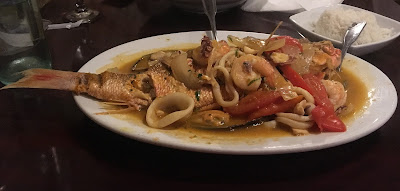- call into scheduler to live migrate (scheduler hint will be set to the host select (which may be none))
- check that the instance's host is up
- if destination host provided, check that it..
1. is different than the instance's host
2. is up
3. has enough memory
4. is compatible with the instance's host (i.e., hypervisor type and version)
5. passes live migration checks (call using amqp rpc into nova manager check_can_live_migration_destination)
- else destination host not provided, find a candidate host and check that it
1. is compatible with the instance's host (i.e., hypervisor type and version)
2. passes live migration checks
- call using amqp rpc into nova manager live_migration
Note: Migration data is initially set by check_can_live_migrate_destionation and can be used for implementation specific parameters from this point.
nova.compute.manager.check_can_live_migrate_destination()
- driver.check_can_live_migrate_destination()
- call using amqp rpc into nova manager check_can_live_migrate_source
- driver.check_ca_live_migrate_destionation_cleanup()
nova.compute.manager.check_can_live_migrate_source()
- determine if the instance is volume backed and add result to the migration data
- driver.check_can_live_migrate_source()
nova.compute.manager.live_migration()
- if block migration request then driver.get_instace_disk_info()
- call using amqp rpc into nova manager pre_live_migration
- Error handler: _rollback_live_migraiton
- driver.live_migration()
nova.compute.manager.pre_live_migration()
- get the block device information for the instance
- get the network information for the instance
- driver.pre_live_migration()
- setup networks on destination host by calling the network API setup_networks_on_host
- driver.ensure_filtering_rules_for_instance()
nova.compute.manager._rollback_live_migration()
nova.compute.manager._post_live_migration()
- driver.get_volume_connector()
- for each instance volume connection call the volume API terminate_connection
- driver.unfilter_instance()
- call into conductor to network_migrate_instance_start which will eventually call the network API migrate_instace_start
- call using amqp rpc into nova manager post_live_migration_at_destionation
- if block migration or not shared storage driver.destory()
- else driver.unplug_vifs()
- tear down networks on source hosts by calling the network API setup-networks_on_host
nova.compute.manager.post_live_migration_at_destination()
nova.compute.manager.rollback_live_migration_at_destination()
nova.compute.manager.remove_volume_connection()
nova.compute.manager._detach_volume()






